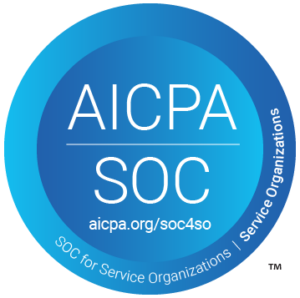The 3X Revenue Target: Aligning Engineer Performance with Business Goals
In the competitive landscape of managed service providers (MSPs), finding the right formula to incentivize your technical team while driving profitability remains a persistent challenge. A well-designed engineer bonus plan can transform your service delivery by aligning the interests of your engineers with those of your clients and your company’s bottom line.
In our recent MSPCFO Office Hours featuring Rex Frank, VP of Academy at Pax8, and Larry Cobrin, Founder and CEO of MSPCFO, these industry veterans shared insights on creating effective bonus structures that encourage engineers to deliver maximum value while increasing company profitability.
The Genesis of the Engineer Bonus Plan
The foundation of an effective engineer bonus structure stems from a simple but powerful metric: each engineer should produce revenue at a rate of at least 3 times their pay. This “3X multiplier” represents the minimum benchmark for a best in class MSP.
“I’ve watched it evolve over time,” explains Rex Frank. “The last Service Leadership Index benchmark for best-in-class multiplier was 2.9 as the floor—the very bottom of the best-in-class level. But I never had my personal bar set that low.”
For context, the revenue-to-labor cost ratio varies by service type:
- Break-fix technical services: 50% labor cost (2X multiplier) is considered good
- Projects/professional services: 40% labor cost (2.5X multiplier) is the target
- Managed services: 33% labor cost (3X multiplier) is the minimum baseline, with 4X being ideal
The transition from time-and-materials billing to flat-fee managed services fundamentally changed how MSPs needed to think about engineer productivity. Where utilization once reigned supreme, efficiency became the new king.
The Evolution of MSP Bonus Plans
MSP bonus structures typically evolve through four distinct stages:
Stage 1: Owner-Centric
- Everyone reports directly to the owner
- Bonuses are given at the owner’s discretion
- Possibly includes profit-sharing based on net profit
- Limited data visibility and consistency
Stage 2: Process-Focused
- Service manager role emerges
- Bonuses reward following processes correctly
- Emphasis on creating good data through proper time entry, ticket status updates
- Potential profit-sharing still based on net profit
Stage 3: Data-Driven Performance
- Leadership team structure
- Good data finally available
- Individual revenue attainment bonuses based on 3X pay
- Focus shifts from “doing your job right” to “increasing productivity”
Stage 4: Team Optimization
- Multi-geography operations
- Individual and team-based attainment bonuses
- Group bonuses for gross margin across teams
- Advanced structures like Service Leadership’s “Double Up/Double Down” plan
Newton's Third Law of Bonus Plans
When implementing any bonus structure, remember that “for every action, there is an equal and opposite reaction.” Engineers will optimize their work to maximize their bonuses—which can be good or bad depending on your plan’s design.
The shift from time-and-materials to flat-fee pricing perfectly illustrates this principle. When bonuses were tied to utilization, engineers maximized billable hours against flat-fee agreements but inadvertently reduced overall agreement profitability.
Critical Bonus Plan Principles
Two non-negotiable principles must guide your bonus structure:
- What’s good for the client and company should be good for the engineer’s bonus
- What’s bad for the client and company should be bad for the engineer’s bonus
These principles ensure both reward and accountability. As Rex Frank notes, “Sometimes bad things happening, where the engineer doesn’t achieve bonus, is the best motivator to solve whatever that underlying problem is.”
For example, if missed alerts or unchecked backups lead to extensive client downtime, the resulting time spent in recovery should impact the engineer’s bonus. This creates strong motivation to improve monitoring processes and preventative measures.
Common Risks and Challenges
Implementing a performance-based bonus plan comes with several risks:
Data Quality Issues: You need good data to calculate bonuses fairly. Poor-quality data leads to distrust in the system.
Cultural Resistance: Engineers may challenge management decisions if they see those decisions impacting their bonuses. For instance, they might question undercharging certain clients or inefficient processes.
Gaming the System: Engineers will naturally optimize their work to maximize bonuses. This is generally positive when aligned with client and company interests, but watch for:
- Cherry-picking high-margin agreements
- Time entry discrepancies
- Cutting corners on service quality
Larry Cobrin emphasizes: “Any compensation plan can be negatively gamed. I would argue that this plan, because it’s tied directly to revenue earned by the company, has fewer opportunities [for abuse].”
The Top 5 Data Requirements
To implement an effective bonus plan, ensure these five data elements are correct:
- Time must be marked as billable and covered by agreements Instead of marking agreement-covered time as “no charge” or “do not bill,” mark it as billable and absorbed by the agreement.
- Use additions with price, cost, and quantity Break down flat fee agreements to distinguish between service revenue and product resale components.
- Create invoices in your PSA system Don’t bypass your PSA by creating invoices directly in your accounting system.
- Implement tiered rates when billing against agreements Different engineer levels should have different billable rates, even for agreement-covered work.
- Enter actual time, not rounded time Let the system handle rounding; engineers should track actual time worked.
The Team Effect of Tiered Rates
Tiered rates create a powerful incentive for senior engineers to delegate appropriately. When multiple engineers work on the same agreement:
- If all engineers are at the same level, they share revenue equally
- If engineers are at different levels, higher-rate engineers receive proportionally more revenue credit
- When senior engineers do work that could be handled by junior team members, they dilute their own revenue ratio
This naturally encourages senior engineers to document processes, create knowledge bases, and delegate predictable tasks to junior staff—keeping their own limited hours focused on high-value activities.
Implementation Tips for Success
If you’re considering implementing this bonus structure, keep these tips in mind:
- Start where you are If your team is currently averaging 2X rather than 3X, begin there and gradually increase targets.
- Share data transparently Engineers need visibility into their performance metrics to improve.
- Use regular team meetings to reinforce values Connect the bonus system to client satisfaction and long-term success.
- Work with implementation experts Partner with coaches or consultants who have experience implementing these systems.
- Define clear quality standards Prevent corner-cutting by establishing clear service quality requirements.
The Bottom Line
When properly implemented, performance-based bonus plans align everyone’s interests: clients receive better service, companies improve profitability, and engineers earn better compensation.
As Larry Cobrin summarizes: “Looking at the data from companies that have implemented this… what we see is profitability that goes up and to the right when everybody’s aligned. It’s not just for fun… it’s so you can make more money.”
The end result? The most successful MSPs tend to be those where engineers are motivated to maximize not just their time, but the value they deliver—creating a foundation for sustainable growth and potential higher-value exits in the future.
This blog post is based on the “Engineer Bonus Plan with MSPCFO” webinar featuring Rex Frank (VP of Academy, Pax8) and Larry Cobrin (Founder/CEO, MSPCFO).
About MSPCFO
Winner of both the Partner Innovation and Partner Advocate awards at IT Nation Evolve 2022, MSPCFO is a business intelligence platform designed to solve the unique profitability and productivity challenges managed services providers face. Since the application’s introduction in 2014, MSPCFO has helped thousands of MSPs and TSPs in the United States, Canada, APAC, and Europe identify improvement targets that directly boost their bottom line. Founder and CEO Larry Cobrin’s consulting, investment banking, private equity and product management experience coalesced in his development of the MSPCFO software and business model.
Follow MSPCFO
Want to Improve Your Bottom Line?
Schedule Your Personalized Demo





